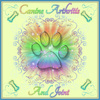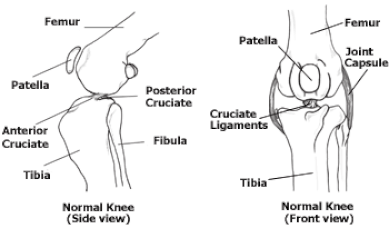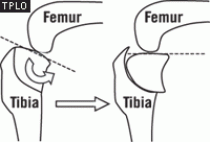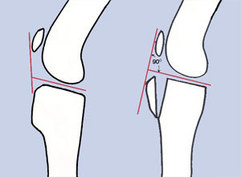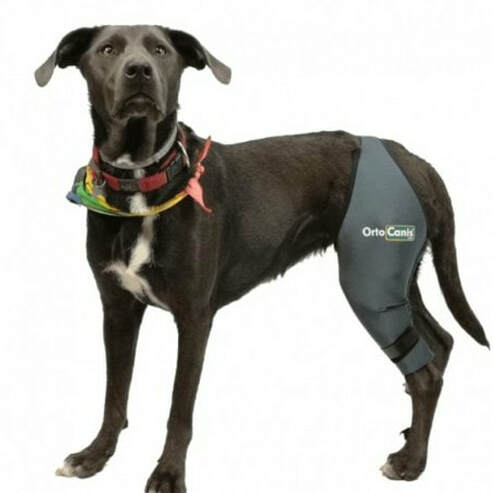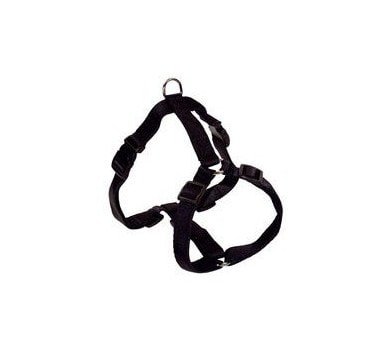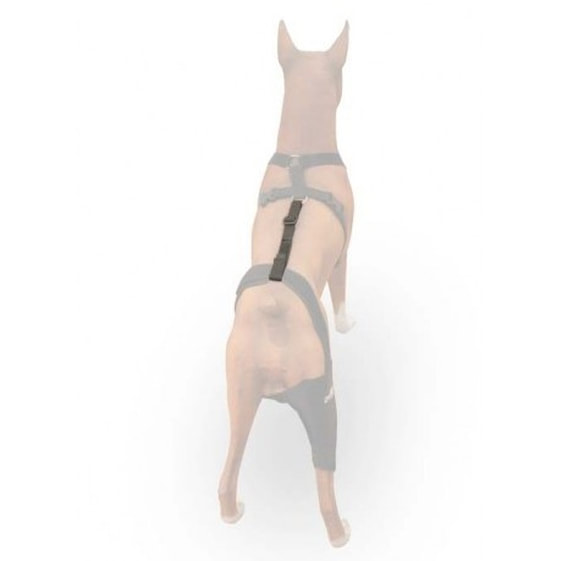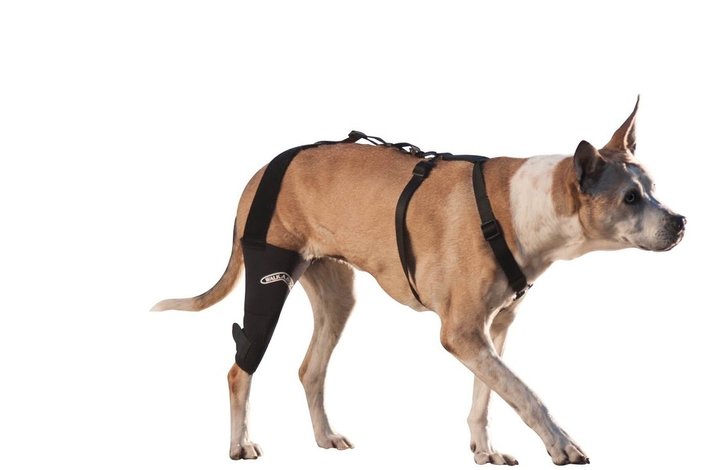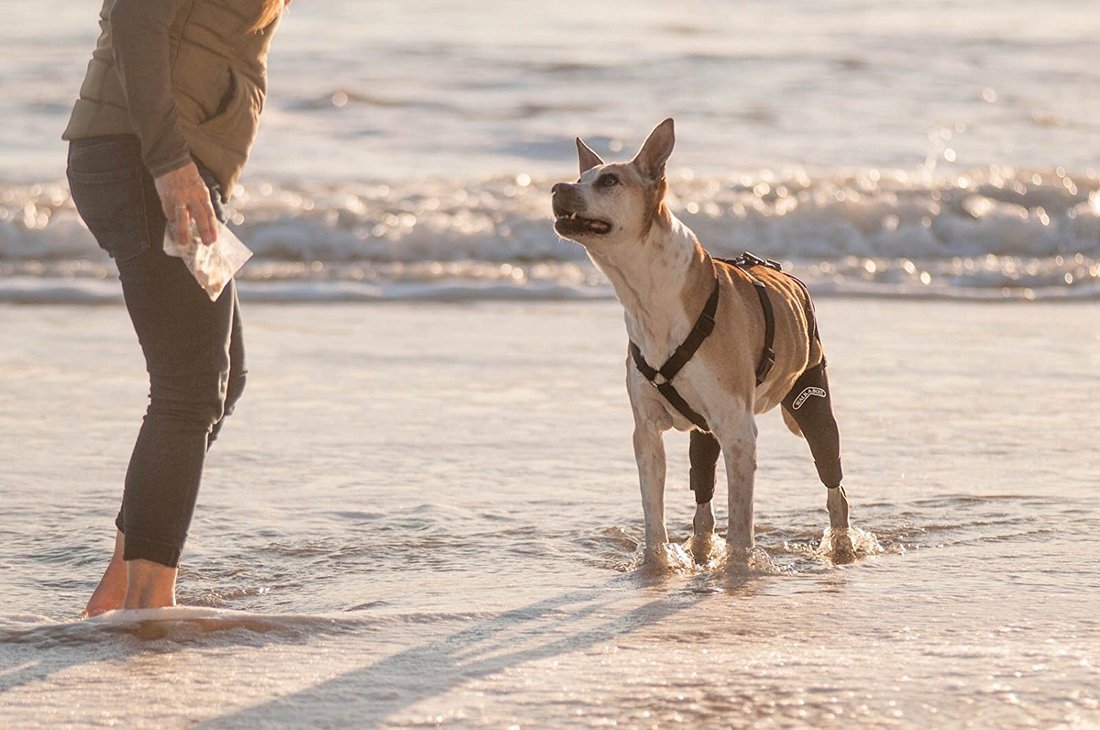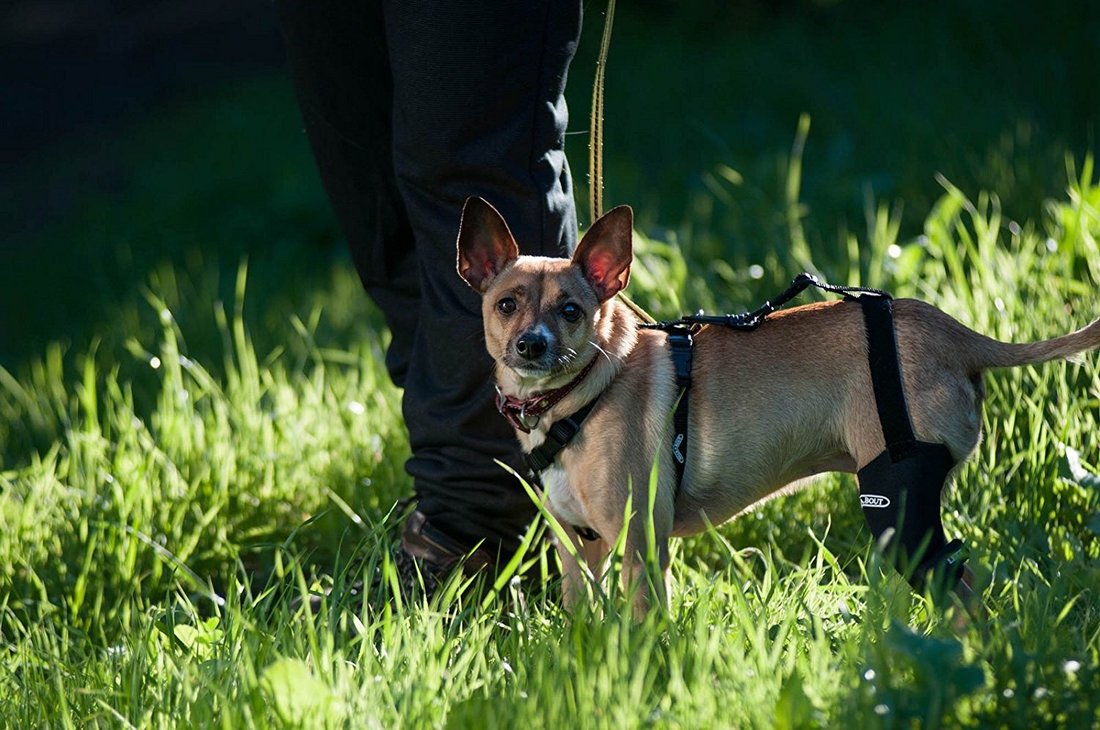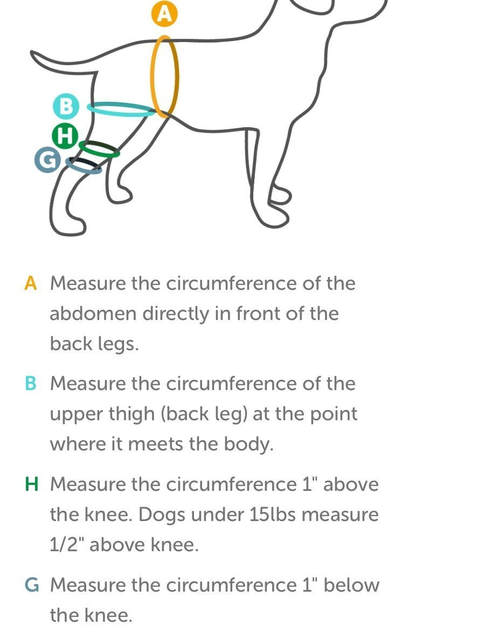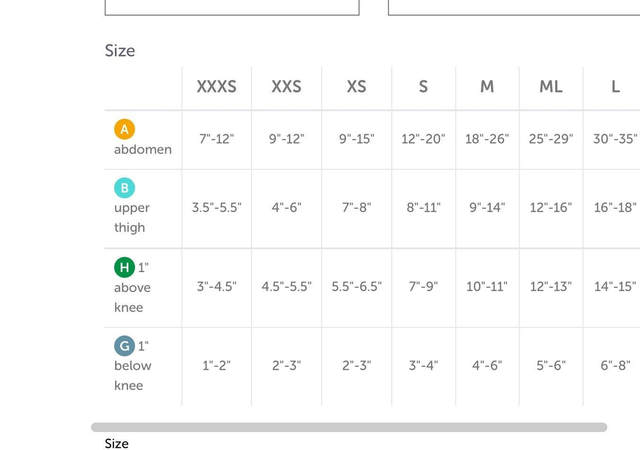ACL Injuries In Dogs |
One of the root causes of ACL tears is a manganese and magnesium deficiency.
Some breeds are more prone to cranial cruciate disease due to genetics. Breeds prone to ACL/CCL disease include Rottweiler, Newfoundland, Staffordshire Terrier,
Mastiff, Akita, Saint Bernard, Chesapeake Bay Retriever and Labrador Retriever.
Some breeds that are very unlikely to develop ACL/CCL disease. Unlikely victims include the Basset Hound, Dachshund, Greyhound, and Old English Sheepdog.
Mastiff, Akita, Saint Bernard, Chesapeake Bay Retriever and Labrador Retriever.
Some breeds that are very unlikely to develop ACL/CCL disease. Unlikely victims include the Basset Hound, Dachshund, Greyhound, and Old English Sheepdog.
By DogHeirs
Anterior Cruciate Ligament (ACL) injuries are one of the most common orthopedic injuries veterinarians see in dogs. The ligament is also known as the Cranial Cruciate Ligament (CCL) in animals. It connects the bone above the knee (the femur) with the bone below the knee (the tibia). Essentially, the ACL stabilizes the knee (or stifle) joint.
It does not matter the size, breed, sex or age of the dog, all dogs can get an ACL injury. That said, studies have shows certain breeds are more prone to ACL injuries.
Anterior Cruciate Ligament (ACL) injuries are one of the most common orthopedic injuries veterinarians see in dogs. The ligament is also known as the Cranial Cruciate Ligament (CCL) in animals. It connects the bone above the knee (the femur) with the bone below the knee (the tibia). Essentially, the ACL stabilizes the knee (or stifle) joint.
It does not matter the size, breed, sex or age of the dog, all dogs can get an ACL injury. That said, studies have shows certain breeds are more prone to ACL injuries.
|
These include:
Labrador Retrievers, Poodles, Golden Retrievers, Bichon Frises, German Shepherd Dogs, and Rottweilers. Other predispositions to ACL injury include:
Approximately 30-40% of dogs who get one cranial cruciate ligament rupture will likely rupture the ligament in the opposite leg within two years of the first rupture. An ACL injury is extremely painful and affected dogs experience pain while simply walking. A tear or rupture leads to joint swelling, pain and instability in the knee joint. If left untreated it will cause lameness in the affected rear leg and, ultimately, chronic irreversible degenerative joint changes. Damage to the ACL is a major cause of progressive osteoarthritis in the knee joint of dogs. The good news is that there is a high success rate with surgeries performed to repair ACL injuries and that dogs who receive surgical treatment can resume regular activities after rehabilitation. |
|
Causes:
ACL injuries can be caused by many factors, although the exact reasons as to why it is so common in dogs is not completely understood. Continual biomechanical wear and tear eventually causes the ACL to break down until it reaches a point that the ligament tears completely. Simple activities such as walking, running and jumping, all cause wear and tear. Obesity, traumatic injuries or strenuous or repetitive activities can also cause the ACL to deteriorate. ACL injuries in dogs do not always occur during athletic activities. Some dogs will be making a simple movement like jumping off a couch or going down a stair when their ACL will tear or rupture. Most acute (sudden) ACL injuries in dogs occur during strenuous or exuberant activities, such as playing, chasing, roughhousing, running, hunting, jumping or engaging in other "doggie" fun. Sometimes a dog will simply stumble and when they get up they will have ruptured their ACL. Other times ACL injuries will develop slowly over time. This can be caused by genetic abnormalities that cause poor muscle tone or poor neuromuscular coordination. Obesity also contributes to chronic ligament damage because of the extra weight placed on the joints. Prevention There is no straightforward way to prevent ACL injuries in dogs. Keeping your dog healthy and in good physical condition is the best prevention, but by no means guarantees your dog will avoid tearing their ACL. Well-conditioned dogs are better able to avoid injuries, because their joints and bones are protected from outside stressors by strong surrounding musculature. General rules of thumb are: Keep dogs on high-quality diets at optimal weight. Give dogs regular, moderate exercise. Dogs with conformational abnormalities in their rear legs may predispose them to ACL injuries. These dogs should not be bred and their activities monitored. If a dog is inactive for a period of time, avoid suddenly getting dog to do sudden strenuous activity. (e.g. if they dog has been a couch potato all winter, avoid suddenly going out for a 2 hour play time at the beach in the summer). Instead, gradually work up /train your dog to have the endurance and muscles so they can enjoy more vigorous activities. |
|
Symptoms:
Often symptoms of ACL injuries are gradual and a dog will slowly become more lame as the ligament becomes more damaged. Other times, when there is a rupture or tear, there is no advanced warning signs. Nearly all dogs with tearing or damage to their cruciate ligament will have swelling that is felt on the front part of their knee.
Diagnosis : Veterinarians use a test called the cranial drawer test to check the cranial cruciate ligament for looseness. The test is called a drawer test because the movement of the femur in relation to the tibia is similar to pulling and pushing in the drawer of a cabinet. The affected knee is tested for palpable laxity or looseness, which is referred to as cranial drawer instability. |
|
A drawer movement in the knee accompanies a ruptured ACL. Secondarily, a radiograph (X-ray) will be taken to determine the extent of the ACL damage and the progression of the injury. X-rays also will likely reveal if there is any fluid or arthritis in the joint or if there are bone spurs or fragments. Partial ruptures are more difficult to diagnose. Dogs with partial ligament tears will usually have swelling of their knee and pain when their knee is completely extended.
|
|
Canine ACL tears are debilitating to a dog. Oftentimes, full tears to a dog's ACL will require surgical repair to avoid severe, progressive osteoarthritis. Surgical repairs to ACL tears have a high success rate (usually around 95% for all the procedures), but as with all surgical procedures there is always risks involved. For partial tears, non-surgical treatment may be the better, less invasive option, with surgery as a backup if the injury does not heal properly. There are several cruciate surgical techniques used to treat ACL injuries in dogs. However, there is no clear research that points to one technique having better success and outcome than another. That said, some surgeries are more complicated than others and therefore risks of complications may be higher and the surgery more costly. Some techniques may be better at preventing osteoporosis (arthritis) and others better suited for certain-sized dogs and to individual cases. Your veterinarian will recommend treatment for your dog based on his/her size and age and the severity of the injury. It is important to discuss with your veterinarian what is the most suitable treatment options with your veterinarian.
Non-Surgical Treatment Non-surgical, or conservative, treatment may be effective in treating dogs with partial ACL tears. Conservative treatment can be especially effective in dogs who are less than 30 pounds (13.5). Conservative treatment includes strict confinement/rest for 6 weeks to 2 months. During this time gentle physical therapy and anti-inflammatory medications (NSAIDs) are prescribed. Other non-invasive treatments include acupuncture, massage, nutrition, aqua therapy, the use of a leg brace, nonsteroidal anti-inflammatory drugs (such as glucosamine and Perna canaliculus/New Zealand Green Lipped Mussel), weight loss for overweight dogs. If conservative therapy does not result in improvement, then surgery should be considered. |
|
Surgical Treatments
With surgery, the aim is to repair cranial cruciate ligament ruptures and stabilize the injured joint, returning the joint motion to normal, while reducing the forces that put undue pressure on the knee. Depending on which surgery is performed the cost can range between $900 to $3500. ACL surgeries include: Lateral fabellotibial suture (or lateral suture or the de Angelis suture). This surgery has been performed for over 30 years and is considered quick, affordable, and safe. The procedure appears to be most effective for smaller dogs (less than 40 lbs/20 kg) as near normal function of the leg is returned. Larger more athletic dogs appear to only have fair outcomes. It also has been observed that this surgery results in thickening and swelling around the joint that may suggest arthritis or more scar tissue. |
|
Tibial plateau leveling osteotomies (TPLO) - This surgery has been around for 10 years. TPLO changes the angle of the knee joint by cutting the bone (an osteotomy) so there is less force acting on the cruciate ligament. A line cut across the shaft of the tibia is made. It is then rotated and held in place with a metal plate and screws. Dogs who get TPLO surgery are usually back on their feet faster and with less arthritis than with lateral suture. However, as it is a more complicated surgery, there is a higher complication rate. TPLO is recommended for large, athletic dogs.
Tibial tuberosity advancement (TTA) and Triple tibial osteotomy - TTA changes the relationship of the patellar tendon and tibial plateau angle via an osteotomy (bone cut). Both of these procedures attempt to stabilize knee joint by using existing tendons as well as cuts in the tibia. They are like variations of the TPLO procedure. Overall, newer surgical techniques are better at addressing the progression of osteoarthritis and appear to have a higher success rate in larger dogs than lateral suture. Rehabilitation after Surgery Care of the incision: During the first 2 weeks after surgery, special attention needs to be paid to the surgical incision. Your vet should outline what to look for and how to care for the wound. Swelling around the incision should go down over a 2-week period. Your veterinarian will remove the sutures usually 14 days following surgery. Ice compress therapy around the surgical site for 24 to 36 hours immediately following surgery may help with reducing swelling and discomfort. Then warm compress and cold compress should be alternated. Consult with your vet as to the best routine for applying cold and heat. Avoid getting the bandaging wet or dirty. Your dog should not be bathed or allowed to swim until the skin sutures are removed. Consult with your vet how best to clean your dog during recovery time. The incision should appear clean and dry. Watch for any opening of the incision, excessive swelling, foul smell, or cloudy or smelly discharge from the site as this may indicate infection. Licking at the skin incision can encourage infection. If your dog wants to lick or chew at the surgical site an Elizabethan collar ("cone of shame") may be needed until the sutures are removed. Do not touch the wound with your fingers as you could infect it. Consult with your vet as to how best to keep the wound clean. To minimize swelling, the incision can be cold packed for a day upon returning home. The incision should then be hot packed 3 to 4 times daily for 5 more days. |
|
Limit Activity:
After surgery a dog will need to stay off the injured leg for several weeks (usually between 8 to 12 weeks). If excessive activity is allowed too soon after surgery, stabilization of the knee can be lost and a dog may require additional surgery. Damage can cause problems with the incision, deep tissue, cut bone, implants and create scar tissue. It is therefore critical your dog rest and stay off his/her leg while it heals. During rehabilitation it's best if your dog is confined to a small room, playpen, cage or small run to limit activity, especially if left unsupervised. Do not let your dog go up and down stairs or jump onto furniture of beds. For the entire period of recovery, your dog should avoid slippery surfaces such as hardwood floors and slippery concrete or tile. If this is impossible, get your dog grip booties that will give him/her grip on the flooring. When you are not around to observe your dog's movements, then it is safest to crate your dog or put him/her in a pen/kennel. Dogs should be on a hand-held leash (a short leash eg. less than 6 feet) at all times when outside for the first 2 months following surgery so that you can control him/her. After the initial 48 hours, a routine of light physical therapy should begin. |
|
Physical Therapy Regimen
Physical therapy is a critical part of the process towards healing ACL injuries. By making time to take your dog to a registered physical therapist, and adhering to your vet's prescribed physical therapy plan, you will give your dog the best chance of healing properly and returning to normal activity. Keeping to a daily regimen may be difficult to achieve with life's hectic schedule. Therefore, it is better to do less than do more when it comes to physical therapy. It will not do your dog any good to rush therapy and try to push the healing with aggressive or infrequent therapy. However, physical therapy should not be ignored if you wish your dog to get back to normal activity and regain normal range of motion in his/her knee joint. Always consult with professionals when undertaking a physical therapy regimen for treating ACL injuries. Therapy will include: Gentle flexion and extension (bending and straightening) of your pets knee for 5-10 minute sessions three times daily. These are sometimes referred to as passive range of motion (PROM) exercises. Warm compresses will be recommended as well to encourage blood flow and healing. Muscle Massage Aqua Therapy |
|
Once healed, dogs can go back to doing virtually any activity, including running, jumping, playing with other dogs and playing ball.
Read more at http://www.dogheirs.com/dogheirs/posts/2349-anterior-cruciate-ligament-acl-injuries-in-dogs-treatment-and-management#hoIPdScCQ7EZXYPq.99 |
You may need harness and strap for it to stay on
harness with metal loop on bottom...to connect strap to..
how strap attaches
you can also make your own strap. Get a soft cloth belt about 3/4-1 inch wide and the length of your dogs back. you will need to slide it under hip strap/belt and then fold it back over to attach to velcro. You will need to sew velcro onto this strap for strap/belt support. you can add velcro at top or a buckle of some sort.
Another one on Amazon: https://www.amazon.com/Kruuse-Rehab-Left-Protector-Large/dp/B00Z0U9VFU?th=1
Don't forget to order the harness and strap.
You will need it trust me!
How to Measure ( B is the critical measurement )
**Canine Arthritis And Joint is intended for informational, educational and entertainment purposes only and is not a substitute for medical advice, diagnosis or treatment. Do not attempt to self-diagnose or treat any health condition. You should always consult with a healthcare professional before starting any diet, exercise or supplementation program, before taking any medication, or if you have or suspect your pet might have a health problem. The opinions expressed by Canine Arthritis And Joint are not to be replaced for medical care. This website and the information contained herein have not been evaluated by the Food and Drug Administration. The information and opinions on Canine Arthritis And Joint are not intended and cannot be used to diagnose, treat, cure, or prevent any disease. This applies to people and pets!
This site uses affiliate links such as banners you may see that allows for paid commissions.
This site uses affiliate links such as banners you may see that allows for paid commissions.
Canine Arthritis And Joint © Copyright 2015-2024
Designed By Paw Prints Web Design
Designed By Paw Prints Web Design
